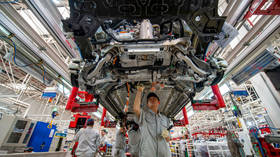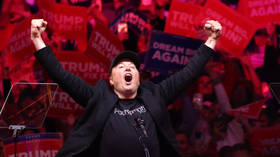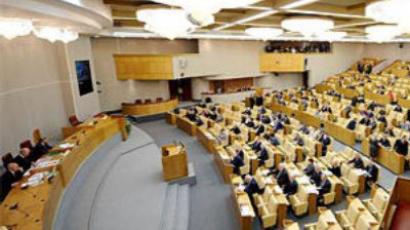Spy swap: drawing conclusions from the murky exchange
As the media frenzy over the spy swap deal between Russia and the US is calming bit by bit, many are now asking who won and who lost.
Ten for four doesn’t seem like a fair trade, bur American officials were quick to point out that they’re getting back four real spies in exchange for 10 people whose accomplishment in spying seemed to be very dubious.
Joe Biden appeared on a late-night talk show last week and, in answer to a question about how fair the deal was, said, "We got back four really good ones. And the 10, they'd been here a long time, but they hadn't done much." So, on unofficial level, we have confirmation that the 10 agents who got arrested in the US were basically harmless.
Now all questions are about the four who were released from prisons in Russia and were sent to the West.
US Attorney General Eric Holder admitted that the US has a great deal of interest in them.
He also added that US’s interest was to swap spies, not to prosecute.
“Russia considered these people very important to their intelligence gathering activities and we agree that in fact they were important to Russians, and it was for that reason that we monitored them,” he said. “They could have been placed in jail, but we saw this as an opportunity to get back to England and get back to the US these four people in whom we had a great deal of interest.”
One of the two men participating in the exchange who landed in the US last Friday is Aleksandr Zaporozhsky. For several years in the 1990s, Zaporozhsky, a colonel in Russian intelligence who became deputy chief of the American Department, was secretly working for the CIA. He was apparently one of the highest ranking American moles in history. He was arrested in 2001, convicted of espionage and sentenced to 18 years in prison. He was reportedly involved in the capture of Robert Hanssen in 2001. Hanssen worked for the FBI and was spying for Russia. He was one of the most important spies Russia had ever had.
As for the second exchanged spy, Igor Sutyagin, he was a nuclear scientist in Russia who was convicted of leaking classified information to the CIA. Sutyagin and one exchanged spy stayed in the UK after the swap was carried out in Austria.
The other two of the group of four exchanged also worked for Russian intelligence, while having serious ties to the CIA and British intelligence.
Now the big question is, what do all these four people know, and why are they so interesting to the US, because the US asked precisely for these four – not other ones, but these.
The media also can’t forget Anna Chapman – whatever detail comes up, she becomes a top story. Reportedly the group of agents was arrested after Chapman made an anxious phone call to her father in Moscow, saying she was worried that her cover had been blown. This is just the latest news on her.
American media was really reluctant to say goodbye to this red-haired tabloid favorite, with even Biden jokingly telling talk show host Jay Leno, “Let me be clear: it wasn’t my idea to send her back.”













